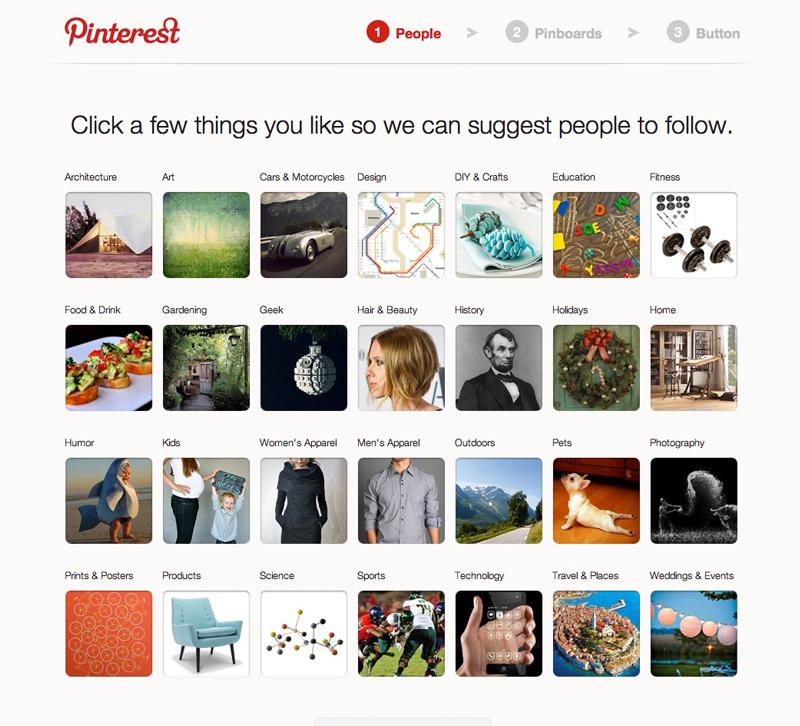At nearly every market this year, four social media platforms keep cropping up in conversations between retailers and interior designers: Facebook, Instagram, Houzz and Pinterest. We already know how Facebook and Instagram have excellent marketing tools for small and mid-sized businesses, and Houzz inspires consumers and connects them with design professionals in their areas. But before consumers start seriously considering a home renovation or design project, they can usually be found on Pinterest.
The original inspiration platform, Pinterest gets people thinking about home design long before they have a project or budget in mind, and it's a great place to start building a following of future customers. If you can get consumers familiar with your brand before they even have a project, they'll be more likely to come to you when the time is right.
While regular activity certainly helps, advertising on Pinterest can help you build a greater following and attract more customers, no matter what stage of the design process they're in. Here's how to advertise with Pinterest and how to do it well.
Type of Pinterest Ads
Like Facebook, Pinterest offers several types of ads to meet the diverse needs of businesses. Depending on what you want to accomplish, you may find that one type of ad is more beneficial than another.
Before you take a look at the types of ads, sit down and think about what you want to accomplish with Pinterest ads. Do you want to build awareness? Direct buyers to your online store? Generate leads? Once you have a concrete goal in mind, you'll be able to confidently pick an ad type and judge its effectiveness.
The types of Pinterest ads are:
Awareness: Want to find new business in your area? Awareness can help you build your brand, and you only pay per 1,000 impressions.
Engagement: If you specifically want to get your products in front of eye balls and get people pinning and clicking on your posts, Engagement ads can help you build activity on your boards. Businesses pay per re-pin, closeup and click.
Traffic: The latest stats show that 55 percent of Pinterest users come to the platform specifically to shop and find products. Traffic ads will help direct users right back to your website for purchase. You only pay when someone clicks to your website.
Unlike Facebook, Pinterest has a streamlined process for its advertising, so as long as you have a Pinterest Business account, you can follow the same process regardless of the type of ad you want to create.
How to Create a Pinterest Ad
What's great about advertising on Pinterest is that the ad portal is user-friendly and simple to set up. No matter how much or how little time you have, you should be able to set up a Pinterest ad in less than an hour.
After you've set up a Pinterest Business account, follow these simple steps and start seeing the results.
Step 1: Decide on Your Goal
If you haven't already, finalize what it is you'd like Pinterest to do for your business. Having a clear goal will help you choose the best type of ad and to know what's working and what's not.
Now click the + button on your new business profile and select one of the three ad campaign types. You can also go to ads.pinterest.com. The only information you need to provide is:
- A name for the campaign
- The start and end dates (end date is optional)
- Your daily budget.
With this information, you can create your ad.
Step 2: Choose a Promoted Pin
Ideally, you want to promote a pin that has already be successful organically on your boards. If they were already successful without much help, think how much better these pins will do with a little boost. If you're not sure which of your pins is doing the best or better than others, Pinterest provides filters for you to see what's been popular on your board over the last 30 days.
If you're not sure what to promote, consider this: Pinterest users want to buy and learn more information. If you're going to promote a certain product, make sure the URL link goes directly to that product page where users can put it in their carts and check out.
If you don't sell online, then promote a blog post or something highly visual — listicles and infographics often share well because they provide quick and easy information in a concise and fun format.
Step 3: Choose a Destination and Audience
Now you need to narrow down who will see your ads and where you will send them when they click on your ads. Pinterest doesn't have the audience capabilities that Facebook does, but there are still good ways to make sure that your pins end up in front of a solid audience.
In terms of targeting, Pinterest offers:
- Interests (Pinterest has 420 to choose from) and keywords
- Visitors to your site
- Pinterest users engaging with your boards and pins
- "Actalike" users who share similar characteristics with your current followers
- Location
- Device types
- Genders
- Languages
For most of your promoted pins, the URL should be a given. If you're promoting a product, send users to the product page. if you're promoting a blog, send users to the blog post page on your website. Don't just send people to your home page or to a lead generation page. They will not click around to find your content. They'll just click back and continue surfing Pinterest — while avoiding any more of your promoted pins.
Step 4: Pay for Your Bid
Before you finish, you must decide how much you're willing to pay for the results of your ad. Pinterest uses what is called a "second-priced auction model," which basically means that you just need to top the next-highest bidder.
Pinterest will guide you as you try out different bid. If your bid is too low, Pinterest won't let you advance any farther. In most cases, you won't be charged the full bid amount, so don't panic if your bid gets to be a little high.
Once you set your bid, you're ready to submit your promoted pin to Pinterest! It takes 24 hours for Pinterest to review new ads that come in, so while you're waiting to see your ad, you can add your billing details so you'll be all set for those daily billings.
Step 5: Watch and Learn
Like all social media marketing, trial and error builds the best ads. Your first round of Pinterest ads may not yield the results you want, but if you watch your progress closely, you'll be able to better predict what users respond best to.
Pinterest provides endless social media marketing opportunities, so if you have a strong following, consider advertising on the site.
Have you advertised on Pinterest? Share your thoughts and experiences with us!
(Photo: Gustavo da Cunha Pimenta via Flickr)







